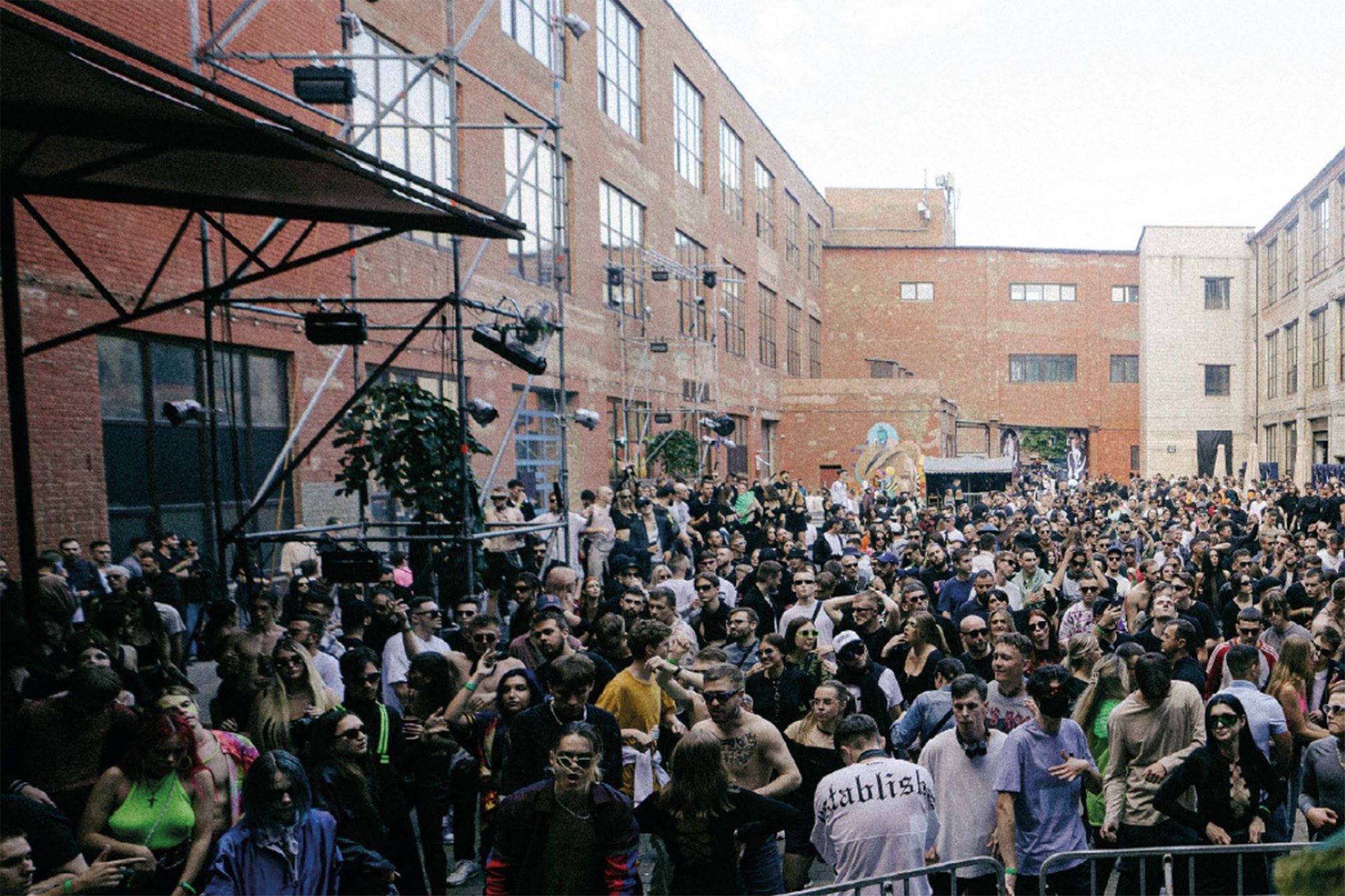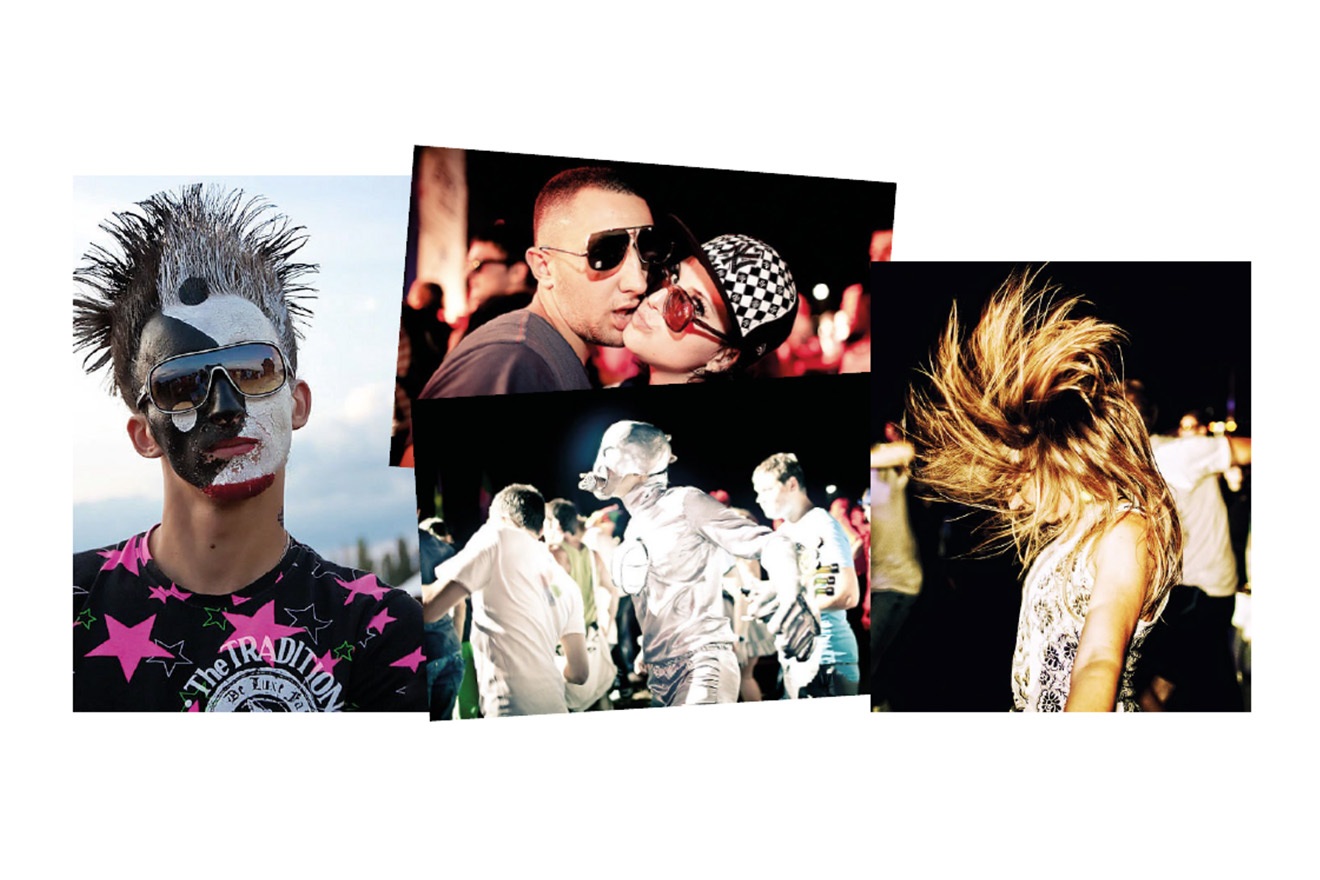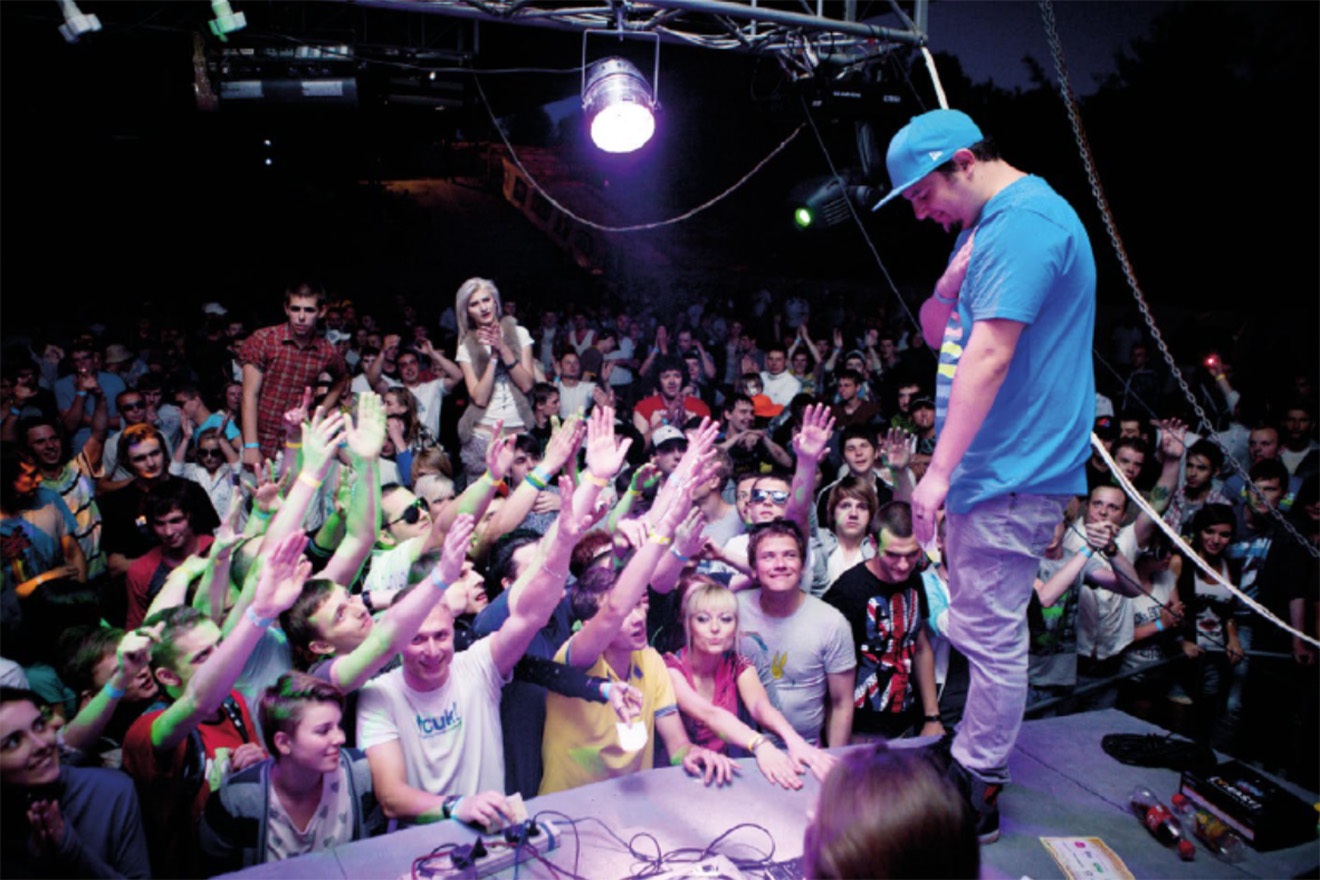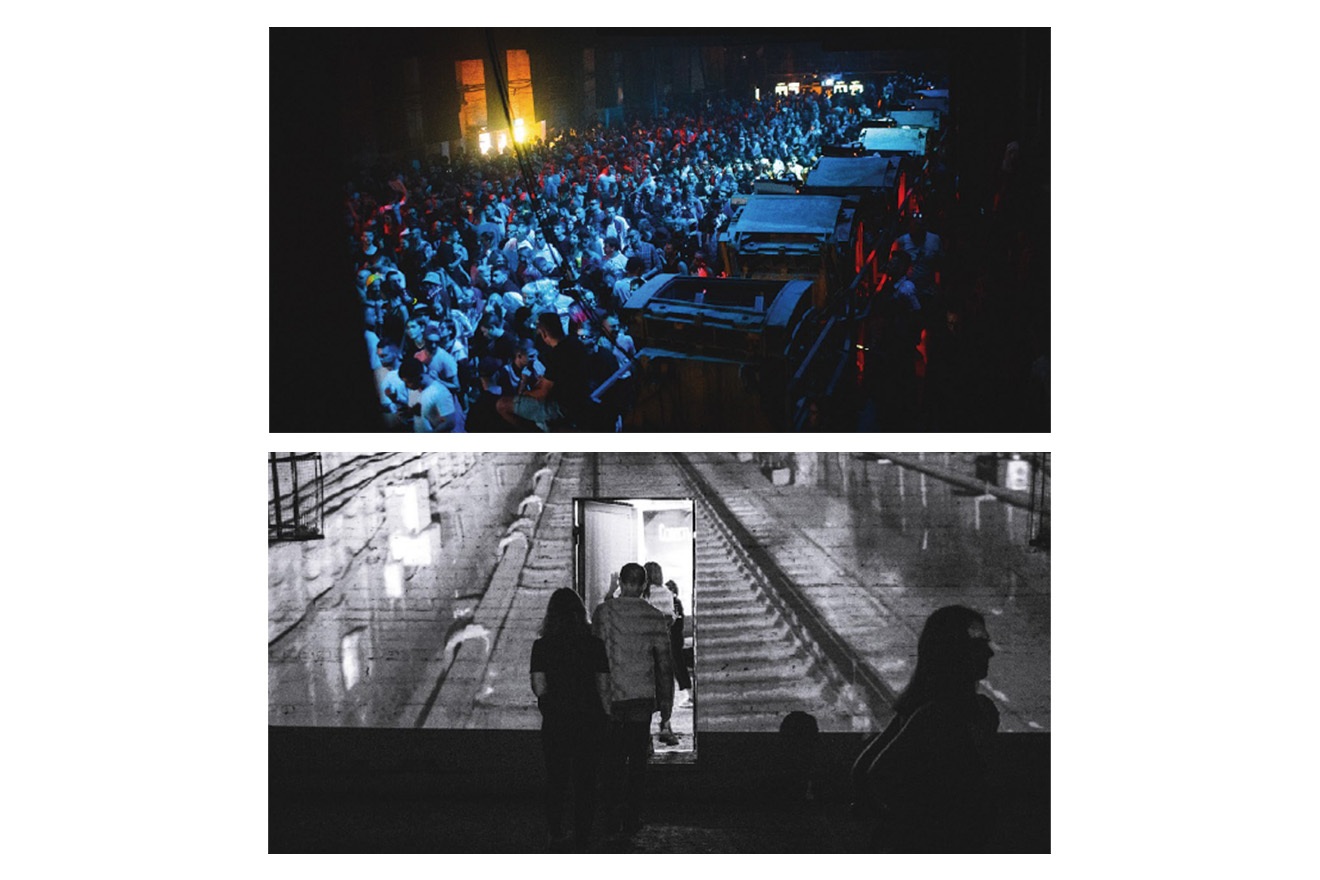 Features
Features
The evolution of Ukraine's dance music scene, decade by decade
To celebrate Ukrainian Independence Day, we look back at the history of the country's era-spanning dance music scenes alongside an all-vinyl mix from Vlad Fisun charting 30+ years of Ukrainian dance music
Every day, Ukrainians fight for their independence on the battlefield in an unprovoked war against Russia. Every year on August 24, Ukrainians celebrate Independence Day, a holiday in tribute to the millions of heroic people who stand guard over freedom, democracy, and human rights.
Almost a year ago to the day, Mixmag opened a new office in Kyiv, Ukraine. To celebrate, the local Ukrainian team is celebrating its first birthday with a gift giving back to the dance music community. In September, Mixmag Ukraine will publish a new book titled The History of the Ukrainian Rave – a deep and exciting study of the local scene, covering everything from the period of the late Ukrainian SSR to the time of the pandemic. It also includes more than 50 interviews with influential club figures, musicians, and DJs.
We contacted the author, well-known music journalist Ihor Panasov, and asked him to provide a brief guide to the Ukrainian electronic music scene based on his research. Ihor's text is complemented by an all-vinyl mix from Kyiv-based selector Vlad Fisun, who presents an eclectic selection of Ukrainian electronic music from 33 years of the country's independence.
Jump into a brief evolution of Ukraine's diverse, era-spanning dance music scene below penned by Ihor Panasov, and listen to Vlad Fisun's 100% vinyl mix.
Ucraina Sovieticus
Until 1991, Ukraine was part of the Soviet Union and lived by the rules of the empire. Almost all music from Western Europe and the US was officially perceived as hostile, but there were gaps in the iron wall between Ukraine and the rest of the world, through which some things broke. Kraftwerk cassettes could be found in ordinary stores, and modern, high-quality instruments were available to a select few. Amongst those few was Ukrainian composer Vadym Khrapachov, who made music using an EMS Synthi 100, but such cases were rare. Many progressive musicians from Ukraine made music in exile. In 1975, New York group ElectroNova recorded the cult album 'Ukrainian', which comprises electronic arrangements of folk songs in the spirit of the BBC Radiophonic Workshop. The cover art for this record featured a pysanka, a traditional Ukrainian ornament, lying on a synthesiser panel.
Early '90s: Records aplenty, money scant
In 1991, Ukraine's electronic music scene picked up with the collapse of the USSR. In the first years of independence, Ukraine was eagerly familiarising itself with music from the West, but creating almost nothing of its own. Most musicians didn't have the means to purchase modern recording equipment and relied on the import of music from other countries. Records were brought back in boxes by those who travelled abroad, and DJs from abroad who found themselves in Ukraine. An age-old story tells the tale of a US DJ who played regular sets at a Ukrainian club until he displeased local gangsters, fleeing Ukraine and leaving all of his records behind. Those records were said to have passed through the hands of local Ukrainian DJs for years after.

Mid-'90s: Influence from Manchester's music revolution
In the mid-'90s, Ukrainian underground artists experienced a shift in consciousness, similar to what had happened in Manchester in the late 1980s. The innovative aesthetics of electronic music and technology dramatically impacted the rock scene. Several bands began to use electronic sounds, some leaning more experimental (Foa Hoka, Blemish, Ivanov Down, YARN), and others moved into the dance music scene (Gorod Sputnik, Zumik, Скрябін). Often, these bands performed at squat parties and in communes, in the vein of 24 Hour Party People. In those years, cult Kyiv hotspot Paris Commune, which ran from 1990 to 1994, was where progressive artists from the art scene gathered.
Read this next: How Ukrainian clubs and collectives are aiding the war effort
During this period, music became abundant. The media didn't talk about it, so it was up to party organisers to do the educational work. Among them was Kyiv's Torba Party event series, which brought together DJs, designers, and artists. Its founder, Vitalii Ulitskyi, went to London club Ministry of Sound in the early '90s and was shocked: “The bass throbs threw my leg to the side. That's when I desired to do something similar in Ukraine," he would say. At Torba Party, music was distributed on cassettes, which were given to guests for free. It was so prestigious, even sports stars like Andriy Shevchenko and the Klitschko brothers would frequent.
Early '00s: The first global integrations
In the new millennium, Ukraine's dance music scene finally took shape. 1998 saw the release of the Ukrainian compilation 'Who's Next?', featuring tracks from over ten electronic music projects including Clouds Generator, Salekh, Da Sintezatoros!, Molotov 20, Danilkin, Headache, The Moglass, and others. DJ Pubert, the frontman of the famous Ukrainian rock band Braty Gadyukiny, who was particularly fond of electronic sounds and experimentation, became increasingly prominent. He knew everything about modern British electronic music of the time and wrote a lot of music himself, but didn't release it. In 2023, the musician's wife handed over unreleased DJ Pubert tracks under the pseudonym Qzzaargh to the Ukrainian label Detali, who then released them on vinyl.
The first international successes took place in the early noughties. DJ Pubert was among the first to support the Kyiv-based psytrance duo SynSUN. Inspired by MFG and Astral Projection's goa trance, they recorded several albums that made SynSUN international stars, sharing stages with the likes of Juno Reactor and Shpongle. In 2003, T-Zhuk, a producer from Chernivtsi in southwestern Ukraine, created the country's first big international dance hit, 'Amaga'. This track was in rotation across many European radio stations and stayed in the charts for a long time. Most people in Ukraine thought that 'Amaga' was a Western hit and confused him with Panjabi MC - some people are still surprised to learn that T-Zhuk is from Ukraine.
Mid-'00s: The music scene blossoms
During the '90s, Ukraine had a deep love for house and trance, while other electronic sounds attracted less interest. Everything changed in the 2000s - dance music was burgeoning as an industry. Techno, drum 'n' bass, breakbeat, dubstep, and more began to form communities of both fans and artists. The development of respected clubs and festivals gave impetus to their growth, and each major city began to manifest its priorities: Lviv had a powerful drum 'n' bass community, Dnipro had hordes of techno fans. Artists such as Derrick, Tonika, Move, Mays, Sender, Slava Flash, Ionov, and Бинокль started to release mixes and tracks regularly. Each genre had its heroes: Tapolsky in drum 'n' bass, KOTRA and Zavoloka in the experimental scene, Stanislav Tolkachev in techno, and Sender in commercial dance music.
Read this next: Intimate, nostalgic '90s party shots from the infant days of techno
One standout club in Ukraine's colourful dance music history was Sound Planet, opened in Kyiv by the UK's Dr. Dessy Kiiza Alex in 2005. Before that, he built a business in Ukraine, installing ventilation systems in specialised buildings before deciding to create a world-class nightclub. The soundsystem was installed by engineer Gary Stewart, who also built Ministry of Sound's famous rig: four huge pyramids in each corner of the dancefloor. The club became a top venue in the Ukrainian capital, but unfortunately, only lasted for three years before closing.

Late '00s: Global festival franchises and new stars
Robust soundsystems, modern clubs, DJ schools, competitions, the influence of electronic music on the indie scene, the formation of new labels, a network of stores selling music, and the development of the Internet were all signs of Ukraine's rapidly growing music scene in the 2000s. The first DJ and producer stars began to rise from the soil, including Kon`, Anna Lee, Lutique, Joseph, Ice, and Light. From this environment sprouted figures who would later, in the 2010s, become international stars: Nastia, Spartaque, Omnia, IRA' (now 8kays), hardcore star Miss K8, Juicy M, and plenty more.
At the same time, many English-language electronic projects emerged in house, trip hop, trance, and electrofunk that were technologically advanced and progressive such as Tomato Jaws, The Maneken, and Gorchitza. By the early 2010s, they all disbanded but morphed into bright new names: Cepasa, Ready in LED, Alloise, and ONUKA. The latter left an impression after performing as an interval act at the 2017 Eurovision Song Contest in Kyiv, later dropping their mini-album, 'Vidlik', which topped the iTunes electronic charts in dozens of countries.
The integration of the Ukrainian electronic scene into the global industry was facilitated by cooperation between festival brands that entered the country in the 2000s. Godskitchen, Global Gathering, Therapy Sessions, and Sensation introduced Ukrainian listeners to the global scene (these events attracted 10,000 to 25,000 people). At the same time, they became platforms for local artists to work alongside top stars. Thanks to new acquaintances and networking behind the scenes of these festivals, connections were made that later transformed into the presence of Ukrainian DJs and producers abroad. As an example, Omnia and Spartaque's success grew partly from participating in these festivals.

Early '10s: Post revolution new wave
In 2013 - 2014, Ukraine underwent the Revolution of Dignity, otherwise known as the Ukrainian Revolution, and war broke out with Russia. At the same time, the first generation of DJs and producers grew up in the country, and they had been exposed to dance music in a global context since childhood. They were fluent in English, followed trends, and often travelled to Europe and North America. They personified a new breath of life in the electronic scene: Cape Cod, Monoconda, Cepasa, Neural Clan, r.roo, Woo York, Koloah, and Histibe. Some had already leaned into the Western market, like The Erised, whose debut album was released by Med School, a sub-label of Hospital Records, before two of the band's members went on to form a successful bass project, Hidden Element. Meanwhile, two sisters from Brovary formed the dark pop duo Bloom Twins and moved to London, where they built a thriving music and modelling career. As a warm-up band, they went on a joint tour with Duran Duran and, over the years, have released a heap of dance music collaborations with the likes of Benny Benassi, Jan Blomqvist, and Sofi Tukker.
Mid '10s: Is Kyiv the new Berlin?
Before 2014, Kyiv had a cult club called XLIB, which reminded many of the classic Berlin raves of the 1990s. The outbreak of the war was a sort of earthquake for the local electronic scene and provoked significant changes in the following years. Many iconic artists and brands left, and others stepped up to take their place - it was a revolution under the banner of techno culture. New spaces such as Closer, Keller, and ∄ (K41), as well as new parties and festivals such as СХЕМА, Strichka, Ostrov, Brave! Factory, and VESELKA lead the way. The surge in global attention to Ukraine also manifested itself in an interest in club culture - Europeans who travelled to Kyiv appreciated comfort, freedom, affordable prices, friendly people, and a high level of organisation. These factors led many previously unseen stars of the global electronic scene to perform in Ukraine.
Read this next: "A celebration of life": Strichka Festival was a show of hope and strength from Kyiv's dancers
Late '10s: Going global
In 2018, Boiler Room visited Kyiv. In cooperation with Ukraine music project СХЕМА, our club scene was presented to the world with sets from Stanislav Tolkachev, Voin Oruwu, Nastya Muravyova, John Object, A-Body, Wulffius, Potreba, and Vladimir Gnatenko. “I want people from different countries who will be sitting in front of the screens and watching the broadcast to realize that the youth in Ukraine are fine, not worse than in Berlin, and the music is just as incredible,” Boiler Room curator Michael Stangl said in an interview with Ukrainian media at the time. After that, the music platform came to Ukraine twice more, once in 2019 and again in 2021.
In the late 2010s, the integration of Ukrainian dance music into the global scene reached a prolific stage with a whole galaxy of international stars hailing from Ukraine. ARTBAT, Miss Monique, The Organism, KOROLOVA, and SAGAN grew notorious in the dance music space. Woo York, Koloah, Vera Logdanidi, Bejenec, Yan Cook, and Poly Chain had a firm footing on the techno scene. Silat Beksi, Joss, and Yansima conquered the tech house scene. Heinali became a well-regarded name in avant-garde electronic, while Kurs Valüt built their name in EBM, Go-A and GANNA in folk electronic. Hundreds of Ukrainian artists had international bookings and releases on well-known record labels.
At the same time, Ukrainian artists are appearing more and more often in Mixmag's The Lab, Boiler Room, Cercle streams, and beyond. ARTBAT, Nastia, and Miss Monique all appeared on Pete Tong's BBC Radio 1 Essential Mix. Naturally, there are now more and more collaborations between Ukrainian and European stars: Alina Pash & Brodinski, ONUKA & Deep Forest, Shanti People & Frank Deka, Soft Crash & Ready in LED, Miss K8 & Angerfist. Even Massive Attack remixed Okean Elzy’s song 'Обійми'.
Afterword: Dance music during the war
The following events are not included in the forthcoming book from Mixmag Ukraine, but are worth noting. Despite all the wartime difficulties, the contemporary Ukrainian scene is alive and rapidly renewing and developing. Curfews restricting nightlife, shelling, blackouts, and the economic crisis have not stopped numerous DJs, musicians, and promoters from building a new generation of talent. Si Process, BADWOR7H, Soundots, Human Margareeta, YUVI, Monotronique, Andrii Barmalii, Lostlojic, Feelmark, ODYSSAY, GLÜCK+PERSONA, Ragapop, Heinali, and Re:drum are just a few names that assure us that the Ukrainian dance music scene has a great future ahead.
Read this next: Thirst for freedom: Kyiv's queer clubbing community returns to the dancefloor
At the same time, new, powerful formations are emerging: Laboratorium, VERTUHA, Stezhka, Brukht, Рейвах, МЕХАНІКА, and Drift Kyiv, among others. Authentic underground labels keep uncovering and supporting local talent: Mystictrax, Polygon Records, Gasoline, OCHI, Dnipropop, Standard Deviation, Regular Disco, and many others. To learn more about each of them, please visit Mixmag Ukraine.
As a bonus to this material, we present an all-vinyl mix from DJ Buro's co-founder, digger, selector, and music enthusiast Vlad Fisun, in which he collects the most interesting tracks from various genres of Ukrainian electronic music from 1991 to the present day. Check it out below.
The History of the Ukrainian Rave by Ihor Panasov is out this year via Mixmag Ukraine.


